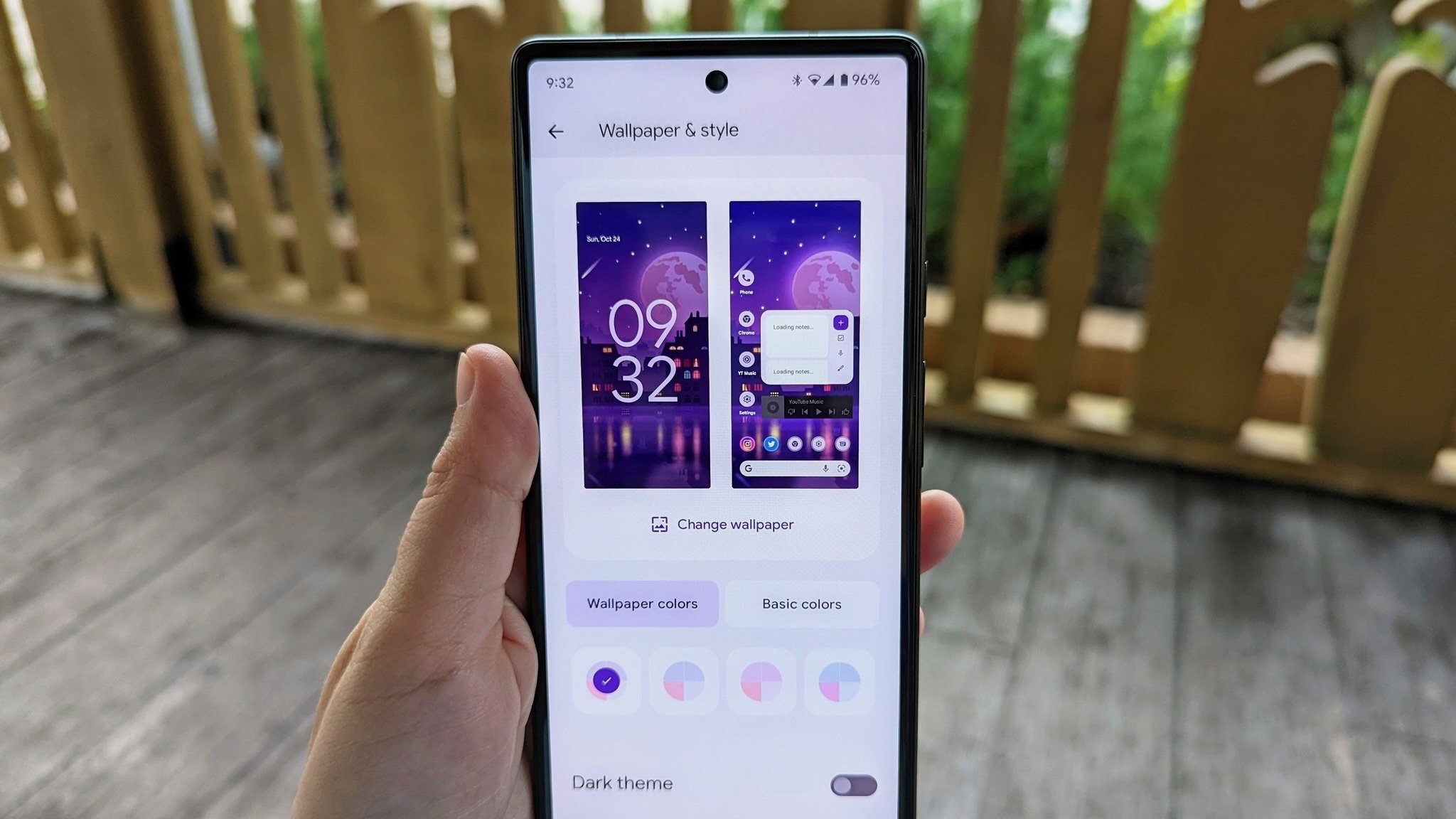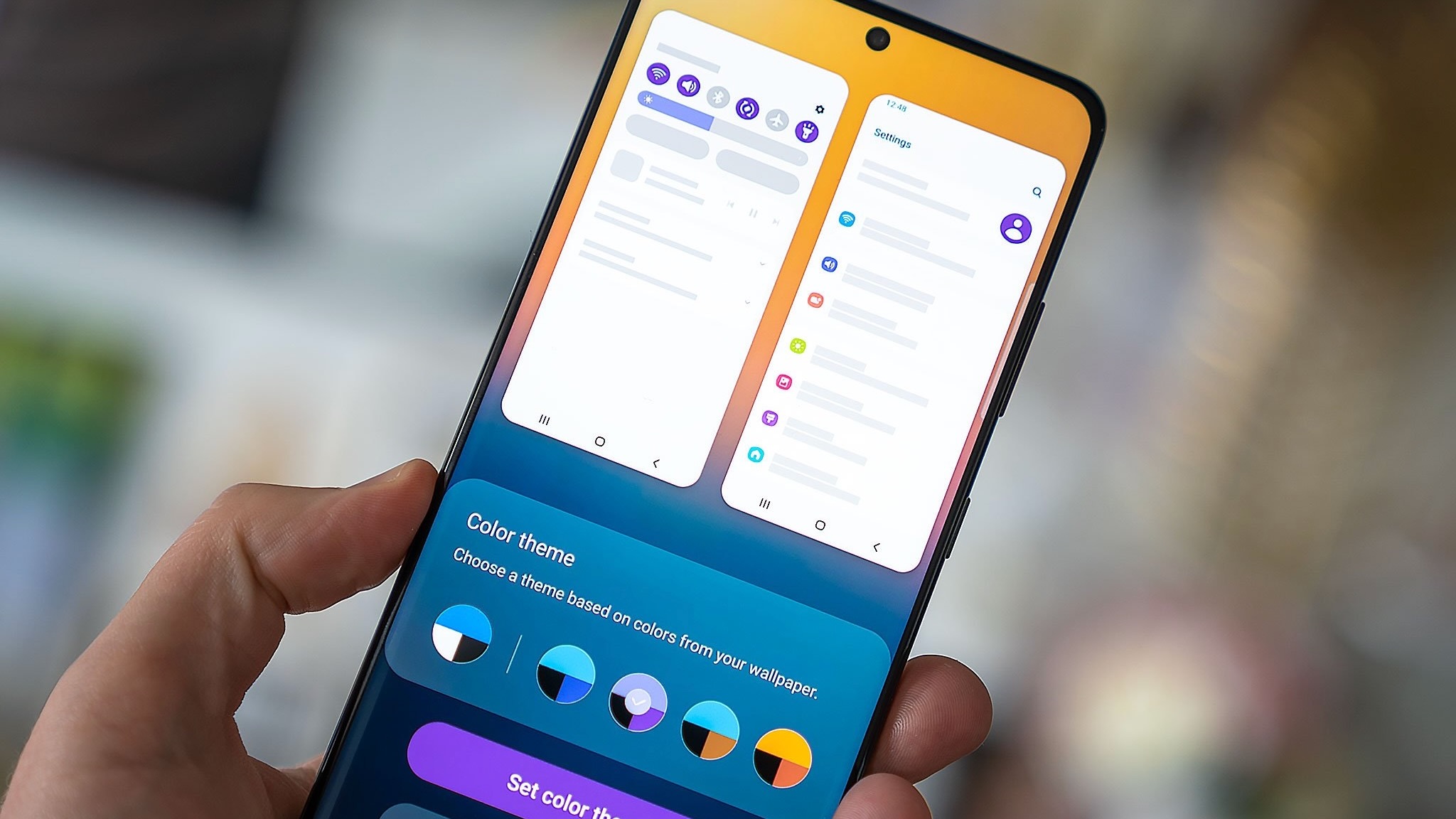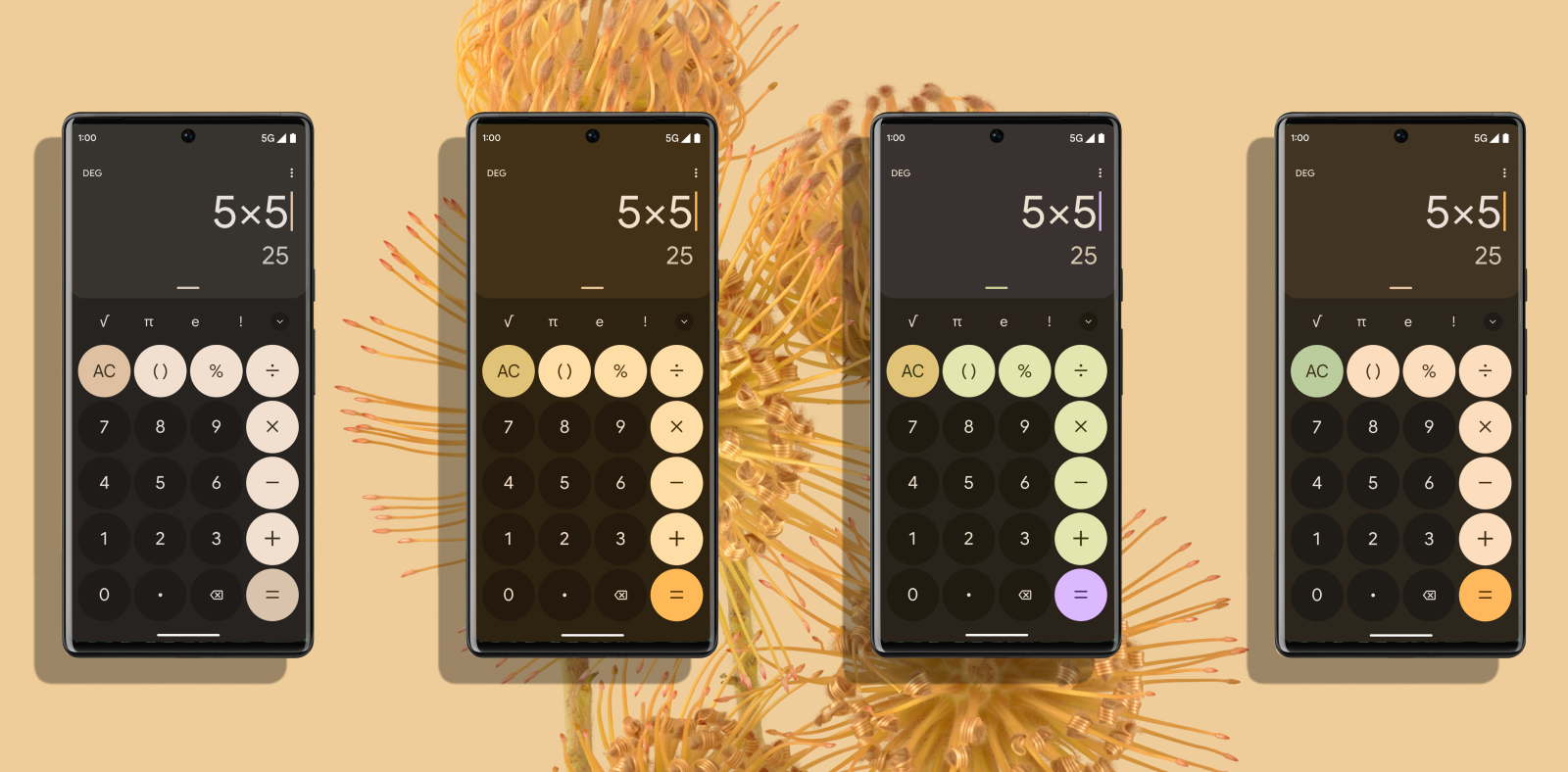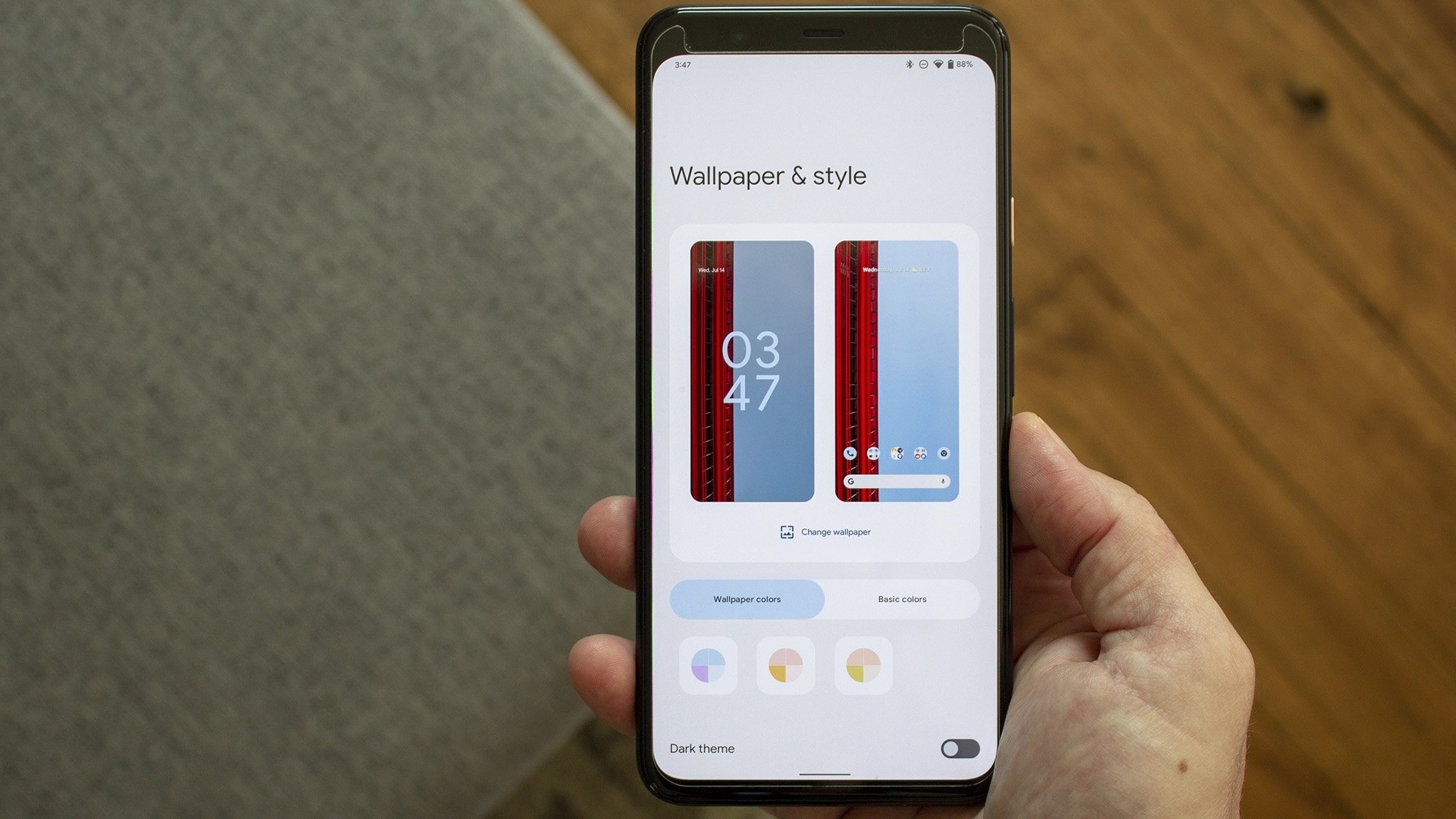Material You: Everything you need to know
The theming framework began with Android 12 on Pixels, but has grown to other devs and devices.

Material You is the theming framework that allows phones and tablets running Android 12 or higher to use your favorite colors throughout the user interface (UI). Introduced back at Google I/O 2021, it launched first on Pixel phones last fall and then incorporated into other Android devices through Android 12L.
It relies on something called the Monet theming engine, which pulls colors from your phone wallpaper and seeds those colors throughout your buttons, Google apps, and app icons. Google encourages third-party developers to incorporate customizable colors into their apps' UI as well.
Dynamic color is just one aspect of Material You. It also redesigned the look of Android, adding more space and thickness to buttons and sliders and redesigning widgets to give them a more rounded, colorful look. Overall, Material You ties to a very specific concept at the core of Android: expressing your personality by customizing your phone.
This all just scratches the surface of what you need to know about Material You. Below, we'll break down which Android phones (will) support it, how Android 13 adapted it, and how to customize your phone's colors.
Which Android phones have Material You?

All Pixel phones that received the Android 12 update have access to Material You. That includes the Pixel 3 through the Pixel 6, and Google phones will be the first to receive any new updates to Material You, such as new colors.
As for other Android phones, the answer is more complicated. Most Android OEMs added some kind of color theming and a wallpaper color picker tool in Android 12, but they weren't initially based on Monet or Material You. Samsung's One UI 4, for example, used something called Dynamic Color that mirrored Google's color picker tool, but wasn't exactly the same.
By February 2022, Google announced Material You would "soon be available" on other Android developers' phones, including Samsung, OnePlus, Oppo, Vivo, realme, and Xiaomi. It made Monet open source starting with its Android 12L release, and essentially made it a requirement that phone brands would have to start incorporating Material You (or some equivalent design language) to all Android 12 phones moving forward.
Be an expert in 5 minutes
Get the latest news from Android Central, your trusted companion in the world of Android
Which phones actually have Material You now? The first non-Pixel devices to receive it were the Galaxy S22 phones and Galaxy Tab S8 series, which arrived that February. But not all Samsung phones on Android 12 have received the Google-backed version yet, as far as we know. Android 12L changes will come to One UI 4.1.1 — which is rumored to arrive this summer — and will likely bring more Material You design features to Samsung phones.

The same generally applies to ColorOS 12, OxygenOS 12, and the other operating systems. All of them made some design language changes to incorporate dynamic colors and a wallpaper color picker tool, but not with Material You or Monet. It appears Google is now asking OEMs to use its own tools instead, but it's possible they won't be available until they update to Android 12L or Android 13.
In other words, you can check when your phone will get Android 12 to see when it'll have a facsimile of Material You, but your phone's UI may get more in sync with Google's UI over the summer with the 12L update, and will match Material You more completely by the next full OS update.
What's different in Android 13?

With Android 12, Material You's color picker was largely dependent on your wallpaper; if you wanted different colors, you either had to change your wallpaper or choose one of the limited "basic color" options.
The Android 13 beta added new pre-made color variants, so you have reliably attractive options even if you choose a wallpaper that doesn't have your favorite colors. The wallpaper color extractor tool gives you sixteen total options, instead of just four.
According to Esper, these new wallpaper options come from four different Material You styles: Tonal Spot, Vibrant, Expressive, and Spritz. Tonal Spot is the default option, Vibrant adds "slightly varying hues and more colorful secondary and background colors," Expressive uses "multiple prominent hues, and Spritz delivers "an almost grayscale, low color palette."
The new Material You dynamic color styles work in DP2! Here's TONAL_SPOT, VIBRANT, EXPRESSIVE, and SPRITZ in order. I'll share how to enable them soon :)https://t.co/6tvDJaafi1 pic.twitter.com/FQWcuTelyGMarch 17, 2022
As for the new Basic color options removed from your wallpaper, Android uses Tonal Spot, Rainbow, and Fruit Salad styles.
Android 13 also extends Material You-themed icons outside of Google apps, which will give your home screen and app locker a more uniform look (assuming 3rd-party developers opt in and offer a themed icon).
Plus, the Android 13 beta added an improved Now Playing widget that shows album artwork and a cute squiggly progress bar, reflecting the more playful personality of the Material You UI.
Material You: How to customize your phone's theme

To change your phone theme, open the Settings app and select Wallpaper & Style. Change your wallpaper if you want to opt for different color options, then select a theme palette, either picked from the wallpaper or from Material You's basic color options.
In this same Wallpaper & Style menu, you can tap Themed Icons to give your apps a distinct Material You look.
What's next for Material You?
Google now requires Android OEMs to build Material You theming into their phones. Although Pixels have received Material You features first, other Android developers could easily spin off their own versions of theming that try something new and exciting. If you own a phone that updates to Android 13 or beyond, you'll certainly see design changes over time that reflect this.
Moreover, 9to5Google reports ChromeOS could soon get Material You Dynamic Colors, meaning it will extend beyond Android to your Chromebook as well. Google is in the midst of making its devices communicate more closely with one another; it makes sense that it would push for a more uniform design language between them, too.
On a similar note, Pixel Watch leaks have shown evidence of Material You UI, so your favorite color scheme will extend to your wrist as well as your phone.
Aside from adding new colors, we're not sure what Google will do with Material You next. But it's very clear that it's here to stay, and not just on Android phones.

Michael is Android Central's resident expert on wearables and fitness. Before joining Android Central, he freelanced for years at Techradar, Wareable, Windows Central, and Digital Trends. Channeling his love of running, he established himself as an expert on fitness watches, testing and reviewing models from Garmin, Fitbit, Samsung, Apple, COROS, Polar, Amazfit, Suunto, and more.
